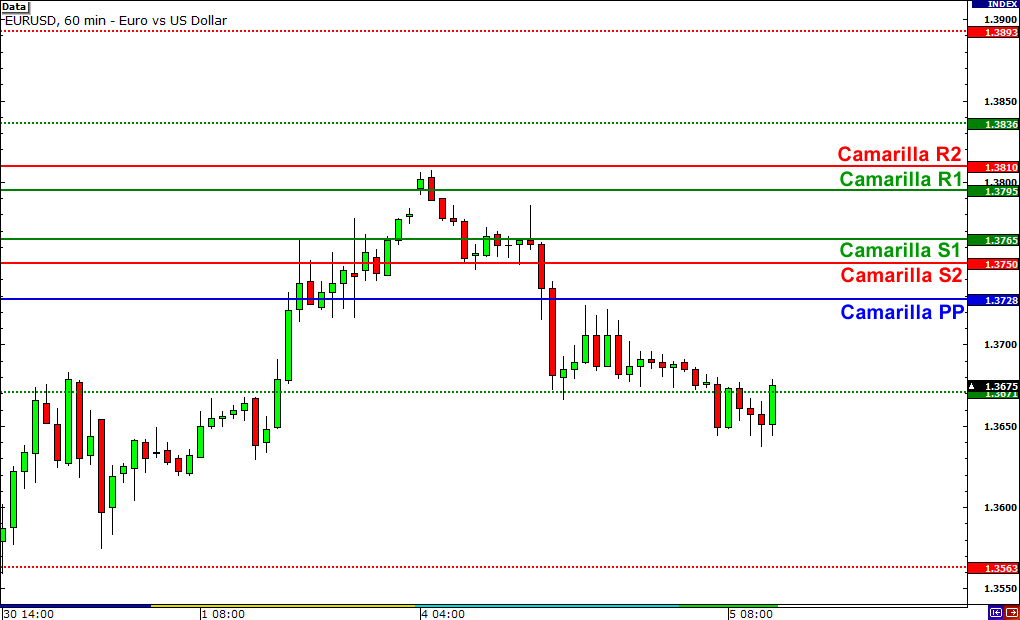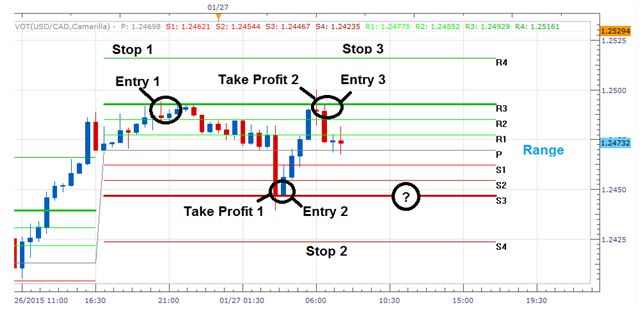When it comes to technical analysis in trading, there are a myriad of tools and strategies available to guide decision-making. Among the most popular are Camarilla Pivots and Fibonacci levels, both of which offer ways to predict price movements.
But how do these two methods compare, and which one is more precise in helping traders pinpoint key price levels? In this article, we'll delve into the mechanics of both strategies, explore their similarities and differences, and provide insights into which might offer more value depending on your trading style.
What Are Camarilla Pivots?

Camarilla Pivots are a set of price levels that traders use to determine possible support and resistance points for an asset. Developed by Nick Stott in the 1990s, Camarilla Pivots are based on a formula that takes the previous day's high, low, and close prices to calculate a series of levels above and below the current price.
These levels are particularly useful for short-term traders, as they help identify potential entry and exit points within a single trading day. The key difference between Camarilla Pivots and other pivot point methods is the inclusion of a unique set of support and resistance levels, which are thought to reflect market sentiment more accurately.
What Are Fibonacci Levels?
Fibonacci retracements are another widely used tool in technical analysis. They are based on the Fibonacci sequence, a mathematical series where each number is the sum of the two preceding ones. The key Fibonacci retracement levels—23.6%, 38.2%, 50%, 61.8%, and 100%—are used to identify areas where prices might reverse, or where a pullback may occur within a trend.
Fibonacci levels are drawn by taking the high and low points of a price movement and dividing the vertical distance between them by the key Fibonacci ratios. These levels help traders identify potential areas of support or resistance and can be applied to any asset class, whether stocks, forex, or commodities.
Comparing Camarilla Pivots and Fibonacci Levels
While both Camarilla Pivots and Fibonacci retracements serve similar purposes in terms of predicting potential price movements, there are several key differences to consider.
Calculations
Camarilla Pivots are calculated based on the previous day's price data, specifically the high, low, and close. The formula for calculating Camarilla Pivots is relatively straightforward but does require the trader to have access to historical price data for each asset. The levels generated by this formula provide a range of potential support and resistance points for the day ahead.
On the other hand, Fibonacci retracements are calculated by identifying the high and low points of a price move and then using the Fibonacci ratios to calculate potential retracement levels. While this method also uses historical price data, it doesn't rely on the same specific timeframe as Camarilla Pivots, which makes it useful for both short- and long-term traders.
Precision
When it comes to precision, the accuracy of Camarilla Pivots versus Fibonacci levels can vary depending on the market conditions and the asset being traded. Camarilla Pivots are particularly effective in range-bound markets, where prices tend to bounce between defined support and resistance levels. In such conditions, Camarilla Pivots may provide more reliable levels for traders to enter and exit trades.
However, Fibonacci levels are often preferred in trending markets, as they help identify key retracement levels where a price pullback might occur. Fibonacci levels are based on a natural mathematical sequence, which some traders believe reflects market psychology, making them particularly useful in markets that exhibit trending behaviour.
Versatility
Camarilla Pivots are primarily used for intraday trading, as they are calculated based on the previous day's price action. This makes them a useful tool for day traders who are looking for quick entry and exit points within a single trading session. However, Camarilla Pivots are less effective for longer-term trading, as they don't take into account broader market trends.
In contrast, Fibonacci levels can be applied to both short- and long-term trades. Fibonacci retracements are frequently used in conjunction with other technical indicators, such as moving averages, to help identify potential trend reversals over a longer period. This flexibility gives Fibonacci levels a distinct advantage when trading assets with long-term price trends.
Which Method Is More Precise?

The precision of both Camarilla Pivots and Fibonacci levels depends on various factors, including the asset being traded, the market conditions, and the trader's style. For short-term traders looking for quick, precise entry and exit points, Camarilla Pivots are often preferred due to their ability to highlight key intraday support and resistance levels. They are particularly effective in range-bound markets where prices tend to fluctuate within defined boundaries.
However, for longer-term traders, Fibonacci retracements are often seen as more versatile, as they can be applied to larger timeframes and help identify potential reversals or pullbacks within a broader trend. Fibonacci levels tend to work best in trending markets, where they can provide insight into potential areas of price correction.
Combining Camarilla Pivots and Fibonacci Levels
While both Camarilla Pivots and Fibonacci levels are powerful tools in their own right, many traders choose to combine the two for a more comprehensive analysis. By using Camarilla Pivots to pinpoint short-term support and resistance levels and Fibonacci retracements to identify potential retracements within a trend, traders can gain a clearer understanding of price movements.
For example, if a price is approaching a key Fibonacci level and also aligns with a Camarilla Pivot, this can provide a stronger signal to enter a trade. By integrating both tools, traders can improve their accuracy and increase their chances of making profitable trades.
Conclusion
Both Camarilla Pivots and Fibonacci retracements offer valuable insights into price movements, but each tool has its strengths and limitations. Camarilla Pivots are best suited for short-term traders looking for precise entry and exit points in range-bound markets, while Fibonacci levels excel in trending markets and offer more versatility for longer-term trades.
Ultimately, the choice between Camarilla Pivots and Fibonacci levels depends on your trading style and market conditions, but combining both tools can provide a more holistic approach to technical analysis.
Disclaimer: This material is for general information purposes only and is not intended as (and should not be considered to be) financial, investment or other advice on which reliance should be placed. No opinion given in the material constitutes a recommendation by EBC or the author that any particular investment, security, transaction or investment strategy is suitable for any specific person.








